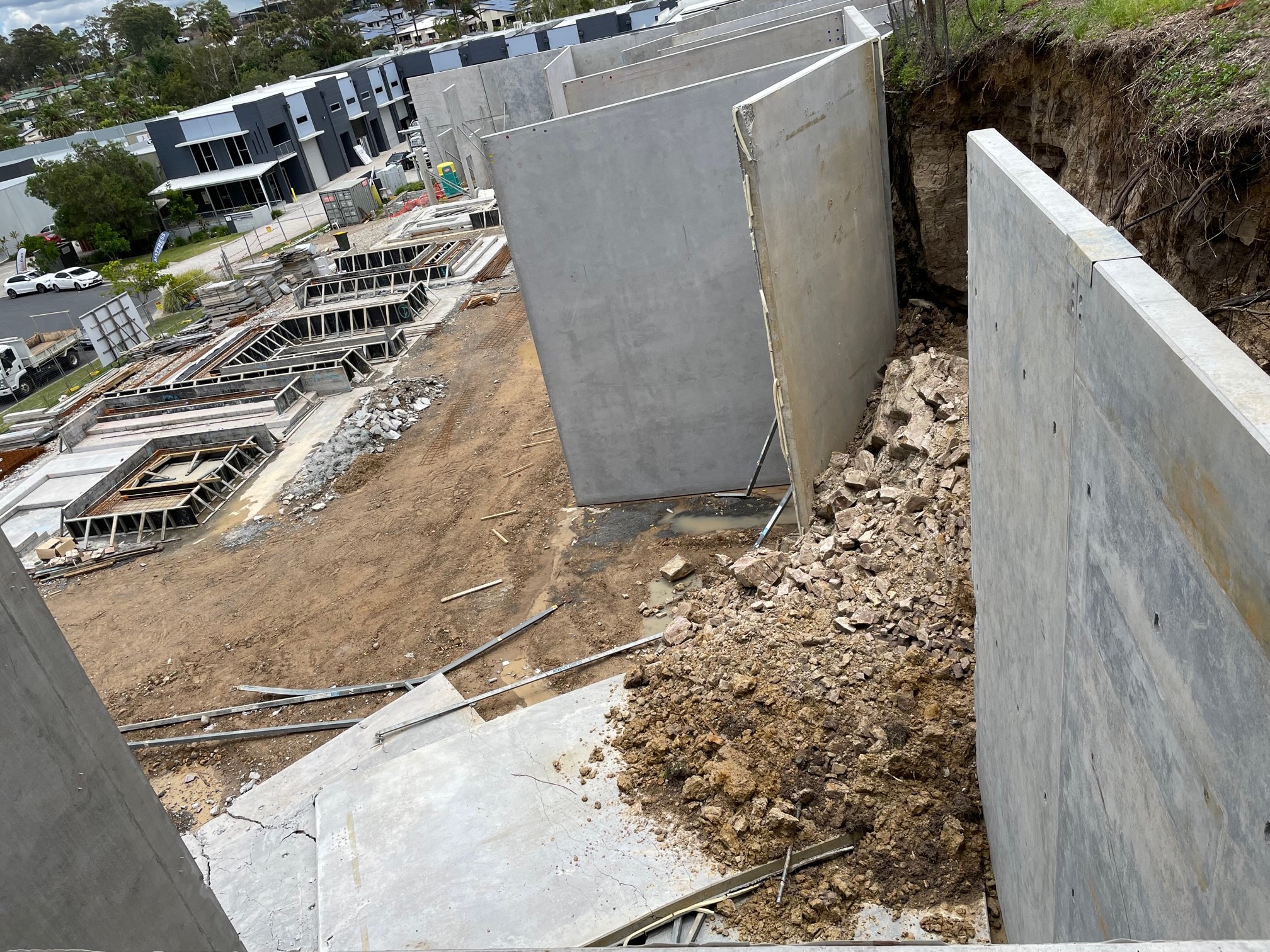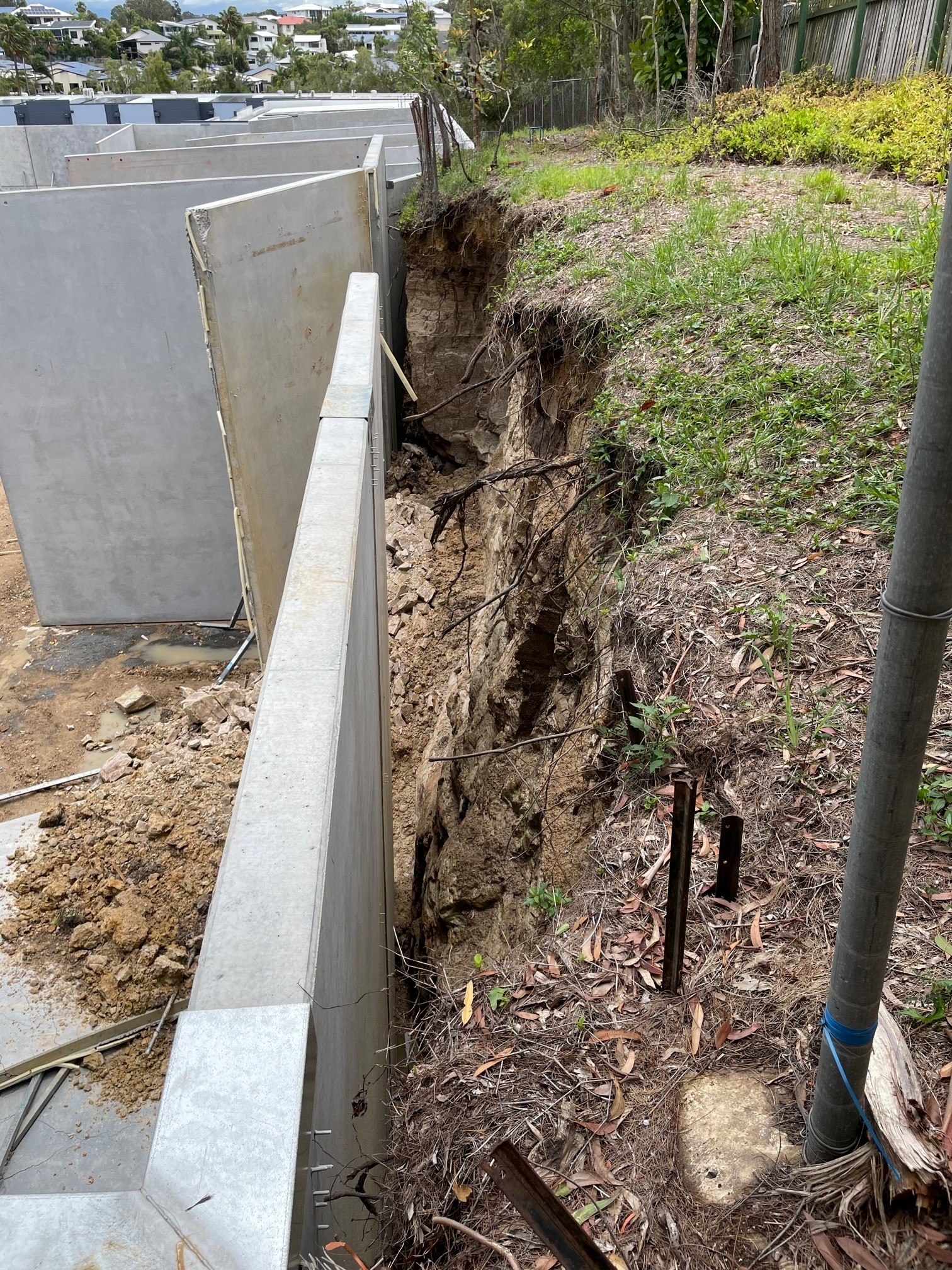Excavation face and tilt-up panel collapse
Issued: 23/03/2023
Last Updated: 23/03/2023
Purpose
This safety alert highlights the risk of collapse of excavation faces and the associated risk of collapse of surrounding structures. The principles in this alert can also be applied to any natural earth or rock face where there is a risk of collapse and workers may be at risk (i.e. a structure being constructed next to a natural face that may be unstable).
Background
In December 2022, an excavation face collapsed and struck a number of concrete tilt-up panels that had been erected parallel to the excavated face. The force of the collapse caused three panels to collapse – one parallel to the excavation face and two other panels that were standing at right angles to this panel (refer to Figures 1 and 2 below). At the time of the collapse, a worker was on site. Fortunately the worker was away from the fall zone of the panels and was uninjured. Several braces attached to the panels were damaged, with some of the brace anchorages ripped out.
Contributing factors
The rock face had been cut for some time and was observed to comprise predominantly of highly weathered sandstone. On the night prior to the incident, it was reported that there had been some rainfall, which may have contributed to the collapse. There may have been additional contributing factors and the cause of the incident is being investigated.

Figure 1: View showing collapsed tilt-up panels caused by the collapse of the excavation face

Figure 2: View showing proximity of the excavation face to tilt-up panels
Action required
This incident has highlighted the significant force that can be applied to structures from the collapse of an excavation face.
Section 305(1) of the Work Health and Safety Regulation 2011 requires a person conducting a business or undertaking to manage risks to health and safety associated with excavation work.
To help prevent a collapse from occurring, the written advice of a Geotechnical Engineer, who is a Registered Professional Engineer of Queensland (RPEQ), should be obtained and followed. This advice should be obtained before the cut is made, with the Geotechnical Engineer preferably carrying out a physical site inspection in person. In addition, the Geotechnical Engineer should inspect the excavation face just before work near the face occurs, to confirm the stability of the face and that workers are not at risk. Inspections should also be made during the course of the works.
Workers should never be permitted in zones where they could be engulfed or struck by a collapsed excavation face or be at risk of being struck by another object that becomes unstable from the collapse of the excavation (e.g. a tilt-up panel that collapses as was the case in this incident).
Wherever a structure is to be erected close to an excavation face, written advice from a Geotechnical Engineer should be obtained before work takes place. This advice should verify the risk of the excavation face collapsing has been controlled so that workers are not at risk. This may necessitate the installation of engineering control measures to control the risk of collapse (e.g. rock anchors, steel sheet piling, shotcrete, and other methods of earth stabilisation specified by the Geotechnical Engineer). Excavation works may also be carried out in sections to reduce the risk.
Any work system used to make an excavation safe should ensure workers are provided with adequate protection from potential collapse (e.g. use of an excavator where the operator is protected in a cabin with the cabin far enough from the excavation face to adequately control the risk).
Advice provided from Geotechnical Engineers often includes conditions and timeframes where re-inspection by the engineer will be required. Typically, re-inspection will be required whenever there is rain or there are visual signs that the excavation may be unstable. Workers should be made aware of any conditions that the Geotechnical Engineer has recommended.
All conditions of the Geotechnical Engineer should be complied with. This includes the need to keep vehicular traffic and piles of spoil away from the top edge of the excavation (placing loads close to the edge increases the risk of collapse). Vehicular traffic not only applies a downwards force but also applies vibration that can make the excavation unstable.